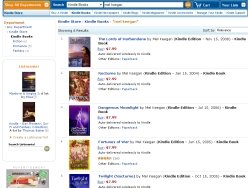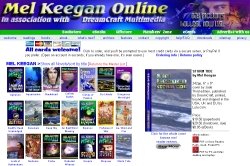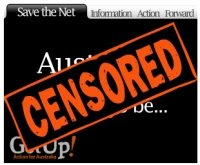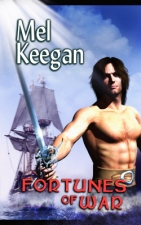That said ... it's Fairbanks the place which is on my mind today, though I couldn't tell you why. Brain wiring or some such abstract human expression. I just stumbled over the data highway to link back through to the mnemonic circuits where Fairbanks is stored in the chaos and clutter of my memory. For some reason, the sounds and smells of the place -- the fell of loess between my teeth! -- are all bright and sharp.
So,with Fairbanks on my mind, let's go there, if only in pictures. Here's a photo essay, complete with a yack-track. Better than getting roped in for a slideshow with beer and popcorn, because this way you can turn me off when I get boring. The images were scanned at 200dpi, so click on a picture for a larger view. The only thing I haven't done (no time today: gotta work) is enhance them to take UFOs out of the prints. Sorry ... but if you ever want to be reading THE LORDS OF HARBENDANE, I have to stop blogging sometime, and start working! Here goes:
FAIRBANKS MEMORIES
 The Chena River runs through the heart of downtown ... if you can call it "downtown." You're looking at it. Downtown, that is. Alaskans call Fairbanks a "city," but even Aussies would call it a town. At 35,000 people, or thereabouts, it's something like Murray Bridge or Mount Barker, which are towns in Adelaide's neck of the woods...
The Chena River runs through the heart of downtown ... if you can call it "downtown." You're looking at it. Downtown, that is. Alaskans call Fairbanks a "city," but even Aussies would call it a town. At 35,000 people, or thereabouts, it's something like Murray Bridge or Mount Barker, which are towns in Adelaide's neck of the woods... It's actually prettier in winter, when a light snowfall will turn the whole landscape into a sort of "winter wonderland," right out of an animated movie. As a bod from downunder who hadn't seen snow in 25 years (since the family moved out from the UK) I was enchanted. Also frozen to the bone marrow. I was wearing two pairs of socks under the boots, leggings under the ski pants, thermal shirt, plus long-sleeved tee-shirt, plus sweater, plus jacket, insulate gloves, and hat. And I was still cold. I'd fly out of Australia in February or March, where it would be 95 degrees (summer), and arrive in Fairbanks ... on a night flight, of course, which would land long after nightfall, with temps of 20 below zero and a skating rink for a parking lot. Woah, such fun. (And the weird this is ... it was. It was different, challenging, and there's something of the "exotic" about Alaska -- unless you're an Alaskan, of course, in which case it's just same old, same old. They think Australia is exotic. Yaaawwnnn.)
It's actually prettier in winter, when a light snowfall will turn the whole landscape into a sort of "winter wonderland," right out of an animated movie. As a bod from downunder who hadn't seen snow in 25 years (since the family moved out from the UK) I was enchanted. Also frozen to the bone marrow. I was wearing two pairs of socks under the boots, leggings under the ski pants, thermal shirt, plus long-sleeved tee-shirt, plus sweater, plus jacket, insulate gloves, and hat. And I was still cold. I'd fly out of Australia in February or March, where it would be 95 degrees (summer), and arrive in Fairbanks ... on a night flight, of course, which would land long after nightfall, with temps of 20 below zero and a skating rink for a parking lot. Woah, such fun. (And the weird this is ... it was. It was different, challenging, and there's something of the "exotic" about Alaska -- unless you're an Alaskan, of course, in which case it's just same old, same old. They think Australia is exotic. Yaaawwnnn.) Alaskaland is a kind of theme park, where Alaskan history is sorta-kinda encapsulated within a ... park-type area. It's bordered on one side by Airport Way (which is the main drag running through what they call "Retail Row," linear miles of stores, and on the other side by the Chena River, which follows the line of the railroad for a few miles. My favorite area was the riverbank behind Alaskaland, where several little footbridges went over the water. You could stand in the middle and watch beavers on a sunny day, or hike over and take weird tech-noir photos of the railroad marshaling yards ... or see the ice carvings, in winter: the World Ice Art Championships are held about a mile from what you see above.
Alaskaland is a kind of theme park, where Alaskan history is sorta-kinda encapsulated within a ... park-type area. It's bordered on one side by Airport Way (which is the main drag running through what they call "Retail Row," linear miles of stores, and on the other side by the Chena River, which follows the line of the railroad for a few miles. My favorite area was the riverbank behind Alaskaland, where several little footbridges went over the water. You could stand in the middle and watch beavers on a sunny day, or hike over and take weird tech-noir photos of the railroad marshaling yards ... or see the ice carvings, in winter: the World Ice Art Championships are held about a mile from what you see above. The heart of downtown is Golden Heart Plaza ... Pioneer Square ... with a clock that plays musical arrangements on its chimes (Frank Sinatra, Sound of Music, Camelot ...!) and a fountain around which are inscribed, on bronze tablets, the names of the pioneer families who opened up the region in the days of the riverboats and gold miners. Also, see the great bronze statue, the monument to the pioneers. The bronze stands in the middle of a pool and fountain ... which freezes solid in winter. There's another shot of this, below, in summer.
The heart of downtown is Golden Heart Plaza ... Pioneer Square ... with a clock that plays musical arrangements on its chimes (Frank Sinatra, Sound of Music, Camelot ...!) and a fountain around which are inscribed, on bronze tablets, the names of the pioneer families who opened up the region in the days of the riverboats and gold miners. Also, see the great bronze statue, the monument to the pioneers. The bronze stands in the middle of a pool and fountain ... which freezes solid in winter. There's another shot of this, below, in summer. Fall arrives at UAF, on a hill outside and slightly above the town. This view of UAF is from the back side of the campus, around by the paddocks used for experimental agriculture. The campus is vast, the size of a town within itself, with students from every continent. It has a great museum, complete with Blue Babe," a mummified ice age bison. Very impressive.
Fall arrives at UAF, on a hill outside and slightly above the town. This view of UAF is from the back side of the campus, around by the paddocks used for experimental agriculture. The campus is vast, the size of a town within itself, with students from every continent. It has a great museum, complete with Blue Babe," a mummified ice age bison. Very impressive. On a summer day, looking down from the campus, you can see all of Fairbanks, and the snake-like meander of the Chena River, which almost ties itself in knots in places. Looking back at this photo, I do believe it was cottonwood time. Folks in the US will know what this is about, but for benefit of Aussies and others ... "cottonwood" is a tree that grows like a weed throughout many parts of the US. Alaska is full of it, and in springtime the trees fill the air with strands of ... well, cotton ... pollen. You lie flat in a patch of sun and look up, and you think it's snowing again. Very pretty -- not quite so great for those who have allergies. Fortunately, I was immune at the time.
On a summer day, looking down from the campus, you can see all of Fairbanks, and the snake-like meander of the Chena River, which almost ties itself in knots in places. Looking back at this photo, I do believe it was cottonwood time. Folks in the US will know what this is about, but for benefit of Aussies and others ... "cottonwood" is a tree that grows like a weed throughout many parts of the US. Alaska is full of it, and in springtime the trees fill the air with strands of ... well, cotton ... pollen. You lie flat in a patch of sun and look up, and you think it's snowing again. Very pretty -- not quite so great for those who have allergies. Fortunately, I was immune at the time. And what would a photo-tour of Fairbanks be, without at least one good refinery shot? A large part of Alaska is about oil. There's no drilling in the Fairbanks region, but there are several refineries. This one belonged to MAPCO Alaska Petroleum, which in 2000 or so became Williams (at least as far as gas stations were concerned). Don't know if they changed the name of the refinery, but the service stations all changed. This photo was taken on a hot, dusty afternoon in 1997.
And what would a photo-tour of Fairbanks be, without at least one good refinery shot? A large part of Alaska is about oil. There's no drilling in the Fairbanks region, but there are several refineries. This one belonged to MAPCO Alaska Petroleum, which in 2000 or so became Williams (at least as far as gas stations were concerned). Don't know if they changed the name of the refinery, but the service stations all changed. This photo was taken on a hot, dusty afternoon in 1997. There you are, Virginia, Santa Claus does exist, and this is where he lives when he's not jetting all over the world delivering parcels. Seriously ... this is a store which sells Christmas goods all year around, located at North Pole, which is (!) south of Fairbanks by about fifteen miles or so. Fairbanks and North Pole are part of the "Fairbanks North Star Borough," which is what the Lower 48 would call a county. Cute store. Weird, but cute.
There you are, Virginia, Santa Claus does exist, and this is where he lives when he's not jetting all over the world delivering parcels. Seriously ... this is a store which sells Christmas goods all year around, located at North Pole, which is (!) south of Fairbanks by about fifteen miles or so. Fairbanks and North Pole are part of the "Fairbanks North Star Borough," which is what the Lower 48 would call a county. Cute store. Weird, but cute. This was fun. There are very few roads that run OUT of Fairbanks, and this is one of them. It goes about 70 miles to Chena Hot Sprints (a resort hotel in the wilderness, founded on the, uh, hot springs), and there, the road stops. In spring, the hundreds of creeks over which the road crosses become swollen with meltwater. The water can overwhelm the road and close it, or ... it can be a foot deep over the road and be big fun. Like this. I was taking the photos here. The trick is to hit the water fast, and throw up a spray about ten feet high.
This was fun. There are very few roads that run OUT of Fairbanks, and this is one of them. It goes about 70 miles to Chena Hot Sprints (a resort hotel in the wilderness, founded on the, uh, hot springs), and there, the road stops. In spring, the hundreds of creeks over which the road crosses become swollen with meltwater. The water can overwhelm the road and close it, or ... it can be a foot deep over the road and be big fun. Like this. I was taking the photos here. The trick is to hit the water fast, and throw up a spray about ten feet high.
Winter ... they plow the streets out, or you wouldn't be able to make your escape to get to work. This area of Fairbanks is known as Arctic Park -- a suburb, where Lathrop and Kennicott intersect and the Captain Bartlett Inn stands on the corner of Airport Way, just around the corner from the Big Dipper Ice Arena. Around the back of this hockey rink, the City of Fairbanks dumps the snow which has been plowed out of your streets. I learned how to drive on snow and ice in the parking lot there, which doubles as a snow dump. Wheeee. And here's the little car that shared so many adventures. A 1996 Pontiac Sunfire, as imaged by Keegan on one knee in the snow, in March 1998, off one side of a road ... I have no idea where, short of, uh, Fairbanks, Alaska! You would not believe the places this car went, and the things it did. If you click to enlarge the photo, you'll see an electrical appliance plug sticking out of the radiator grill. USns will know what this is (well, Floridans might not), but for the benefit of those of us who hail from more tropical climes, I'd better explain. When you park a car outside in Fairbanks winter nights (which can be fifty or sixy below zero), if you don't want the engine block and oil pan to be frozen solid, the battery flat and the radiator turned to solid glue, you (!) plug the car in for an hour or two before you want to start it in the morning; or you leave it plugged in all night. You run a loooooong extension cable to a powerpoint in or on the house and feed the car some juice ... keep the core temperature of the engine up just high enough so it'll actually turn over for you. Cooooool.
And here's the little car that shared so many adventures. A 1996 Pontiac Sunfire, as imaged by Keegan on one knee in the snow, in March 1998, off one side of a road ... I have no idea where, short of, uh, Fairbanks, Alaska! You would not believe the places this car went, and the things it did. If you click to enlarge the photo, you'll see an electrical appliance plug sticking out of the radiator grill. USns will know what this is (well, Floridans might not), but for the benefit of those of us who hail from more tropical climes, I'd better explain. When you park a car outside in Fairbanks winter nights (which can be fifty or sixy below zero), if you don't want the engine block and oil pan to be frozen solid, the battery flat and the radiator turned to solid glue, you (!) plug the car in for an hour or two before you want to start it in the morning; or you leave it plugged in all night. You run a loooooong extension cable to a powerpoint in or on the house and feed the car some juice ... keep the core temperature of the engine up just high enough so it'll actually turn over for you. Cooooool. And this is the one you've been waiting to see, right? The pipeline. The Trans-Alaska Pipeline itself ... the pride of the Alyeska Pipeline Company. Crude from the North Slope travels at high velocity to the oil terminal at Valdez, on Prince William Sound. Alaska has been about oil for a long, long time (before which, it was about gold), and very soon it'll be about gas. There's not much oil left in them thar hills, but there's enough gas to be interesting. The problem is, getting it OUT of those hills without killing the environment. Think about this: the GROUND in the tundra is flammable. Seriously. You can strike a match and set fire to permafrost, due to the percentage of methane, or marsh gas, frozen in this ground. You really want to be dilling for gas in the middle of the equivalent of a lake of gasoline...? Hmmmm.
And this is the one you've been waiting to see, right? The pipeline. The Trans-Alaska Pipeline itself ... the pride of the Alyeska Pipeline Company. Crude from the North Slope travels at high velocity to the oil terminal at Valdez, on Prince William Sound. Alaska has been about oil for a long, long time (before which, it was about gold), and very soon it'll be about gas. There's not much oil left in them thar hills, but there's enough gas to be interesting. The problem is, getting it OUT of those hills without killing the environment. Think about this: the GROUND in the tundra is flammable. Seriously. You can strike a match and set fire to permafrost, due to the percentage of methane, or marsh gas, frozen in this ground. You really want to be dilling for gas in the middle of the equivalent of a lake of gasoline...? Hmmmm. As promised above, the image of the tribute to the pioneers memorial statue, in summer, when the fountains are running and you can actually see the engravings on the bronze tablets. Golden Heart Plaza on a glorious day. In the background, in the early afternoon (when this pic was taken), the clock would be chiming out selections from Camelot or Oklahoma! for your listening enjoyment, while coach loads of tourists from Japan and Korea, Russia and parts of America itself, go through. I would take a half hour, sit by the river and watch the world go by: people watching.
As promised above, the image of the tribute to the pioneers memorial statue, in summer, when the fountains are running and you can actually see the engravings on the bronze tablets. Golden Heart Plaza on a glorious day. In the background, in the early afternoon (when this pic was taken), the clock would be chiming out selections from Camelot or Oklahoma! for your listening enjoyment, while coach loads of tourists from Japan and Korea, Russia and parts of America itself, go through. I would take a half hour, sit by the river and watch the world go by: people watching.  And here's a pungent memory. Only in Alaska! Oh, okay, and Canada, all right, point taken. Caribou Crossing. One of my best memories is of fiddling with a long lens off one side of the Richardson Highway, while a herd of caribou -- wild as anything in Jack London -- galloped into the blue distance. I gave up on the lens and just enjoyed the sight. One of those "never forgotten" moments which come along too rarely.
And here's a pungent memory. Only in Alaska! Oh, okay, and Canada, all right, point taken. Caribou Crossing. One of my best memories is of fiddling with a long lens off one side of the Richardson Highway, while a herd of caribou -- wild as anything in Jack London -- galloped into the blue distance. I gave up on the lens and just enjoyed the sight. One of those "never forgotten" moments which come along too rarely.
And now --
Back to work. More tomorrow -- when DreamCraft and Keegan might just have something new to show, and I hope to be asking for test pilots. In other words, there's a couple of new Keegan book pages you might like to help us test, and tell us what you think.
Ciao for now,
MK

































